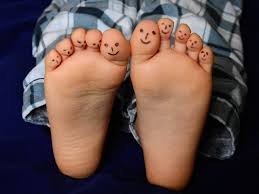03 Dec 2015
Could it be time to take your child to a podiatrist?
Podiatrists can be of significant help to anyone experiencing discomfort or health issues in their feet or ankles. However, you may not have considered whether it’s time to book an appointment for your child.
By keeping an eye on the way your child walks as they develop, as well as paying close attention to any reports of pain or discomfort, you’ll be able to make the right decision for your child’s foot health.
Keep an eye on their gait
One of the most important aspects to look out for is your child’s gait. The term ‘gait’ is used to describe the way an individual walks, so it’s important to ensure your child is walking correctly from a young age to avoid long-term mobility issues.
While it’s expected that very young children who have only recently learnt to walk will have the awkward footing to begin with, this will often be rectified without treatment.
However, if your child’s gait is still showing signs of significant in-toeing or out-toeing, or if they are walking with a limp or even experiencing pain, it’s certainly a clear sign it’s time to take them to a professional.
Correcting your child’s walk
In some cases, your child may be a little older before you notice the way they walk is a problem. You may then think it’s too late to see a podiatrist or help them learn to walk correctly.
There’s no reason to worry – it’s never too late for an evaluation. If your child’s feet are still growing, it may be that their feet could be easily repositioned through the use of inserts. If successful, this will likely eliminate the need for surgery or reconstruction later on.
Sometimes, children have similar issues to adults
There are plenty of reasons adults may visit a podiatrist, and many of their conditions can be applicable for children too.
For example, if your child does a lot of sporting activities, a podiatrist will be able to advise on the best way to avoid aches or splints, in addition to recommending the ideal running child for your child’s feet.
It’s also important to listen to your child when they’re describing aches or pains. They may not be able to describe what’s going on in the way an adult could, so it’s worth getting the situation checked out to ensure it’s nothing too serious.
Verrucae
Children seem to be magnets for verrucae, whether it is through the swimming pool or sharing a shower with siblings. Betafeet Podiatry sees many young people whose verrucae are not being resolved by over the counter treatments. Cryosurgery is the usual treatment option, although discussing any underlying health issues, such as challenges at school, sleeping poorly or other childhood stressors, may give way to other treatment options.
Final Thoughts
In all cases, a parent or guardian must accompany the child.
Don’t leave it too late for your child to have his or her feet attended to – they need to last a lifetime!





